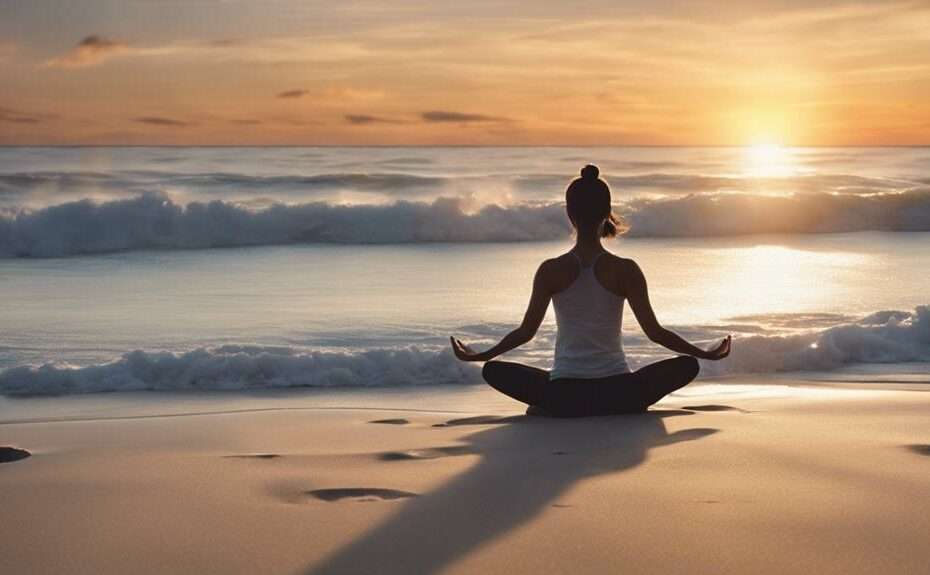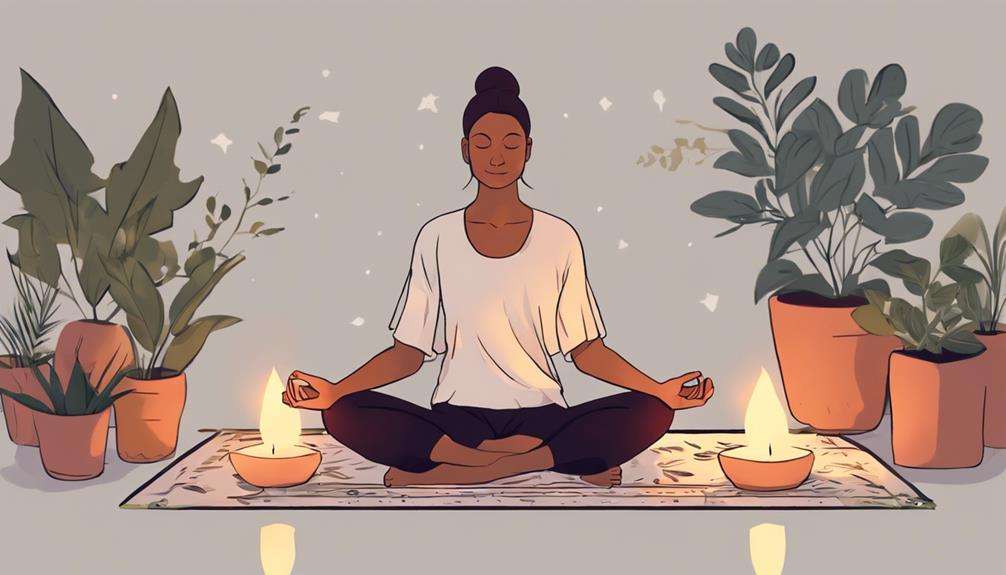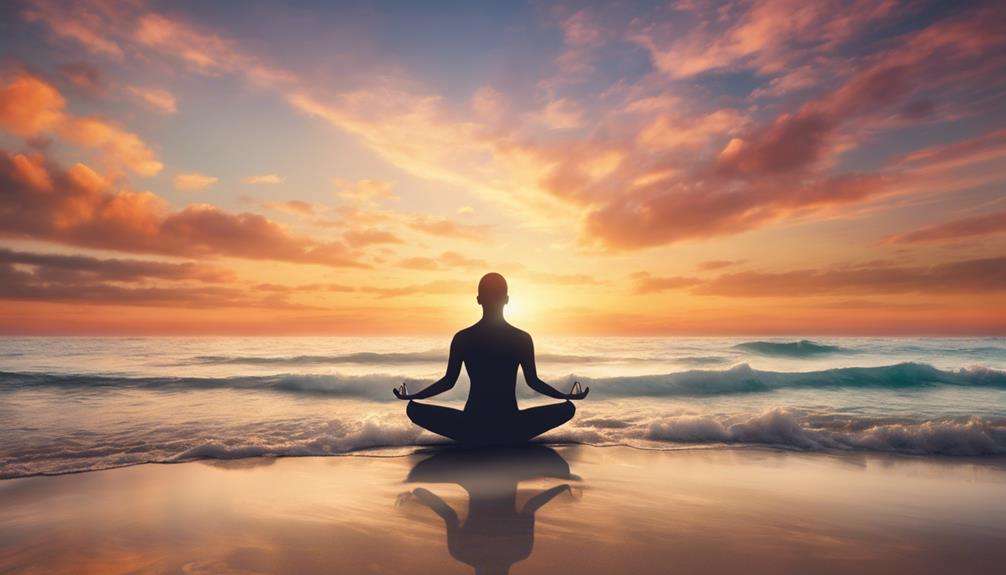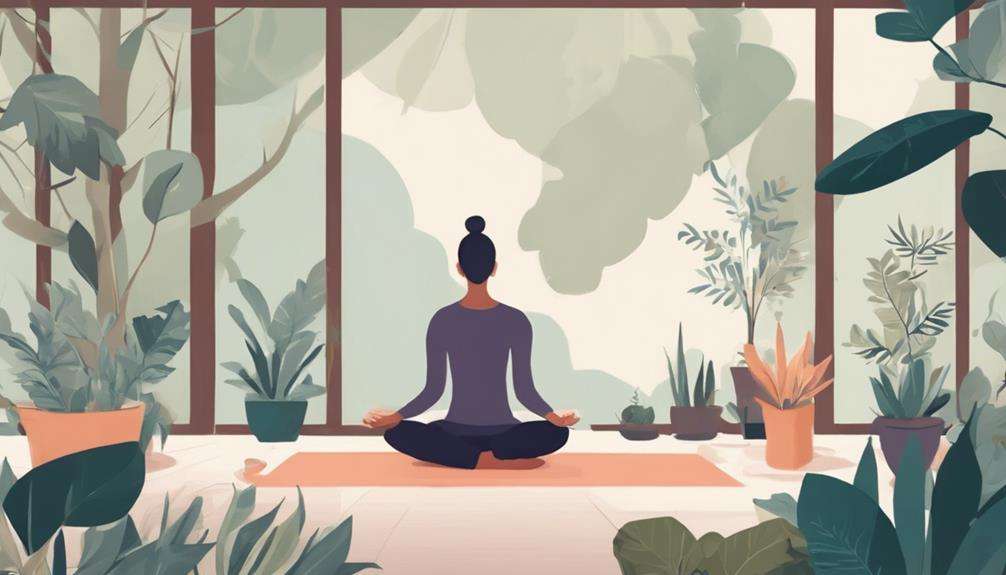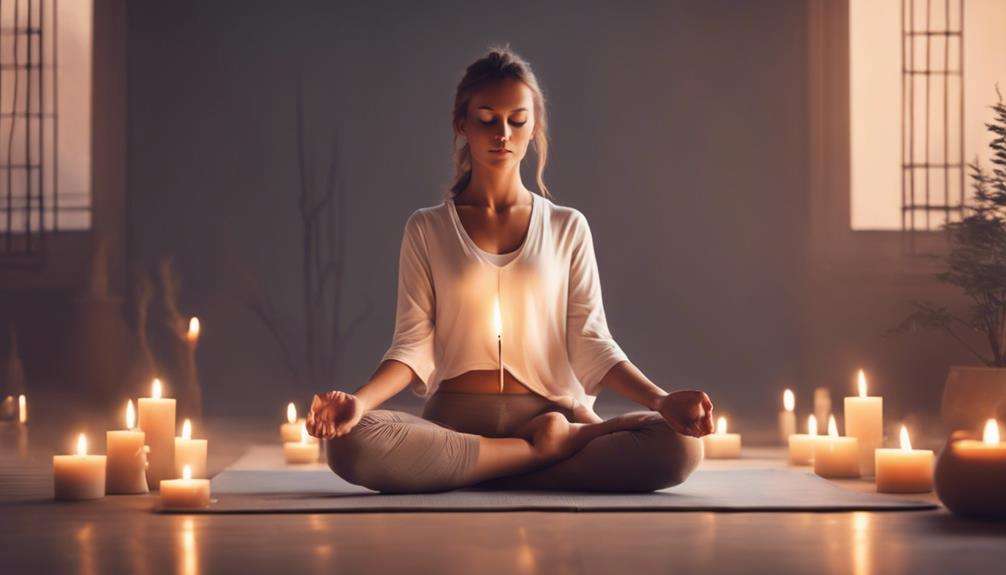When seeking serenity through yoga and meditation, mastering the art of emotional balance is key. Delve into these 5 tips for tranquility:
Start with steady breathwork, explore asanas for emotional release, and embrace meditation for inner calm.
But there's more—creating emotional awareness through yoga and balancing energy flow can be transformative.
Ready to unlock the secrets to emotional equilibrium through your yoga and meditation journey?
Key Takeaways
- Engage in mindful breathing and yoga poses for emotional healing and release.
- Practice meditation techniques for inner peace and self-awareness.
- Use yoga to create emotional awareness and connection.
- Balance energy through yoga and meditation for holistic well-being.
Mindful Breathing Techniques
Engage in mindful breathing techniques to cultivate a sense of calm and balance within yourself.
Deep belly breathing, a fundamental practice, calms the body and mind by activating the parasympathetic nervous system.
By incorporating Nadi Shodhana, or alternate nostril breathing, you can harmonize the right and left brain hemispheres, fostering emotional equilibrium.
Bhramari pranayama, known as the humming bee breath, induces relaxation and reduces stress through its soothing vibrations on the nervous system.
These techniques, when integrated into meditation, enhance self-awareness, focus, and emotional regulation by anchoring your attention in the present moment.
During yoga sessions, deliberately including these breathing practices can promote emotional balance, mental clarity, and overall well-being.
Yoga Asanas for Emotional Release
To further harness the power of yoga for emotional release, incorporating specific asanas can help target and release stored emotions within the body.
Half Pigeon Pose (Ardha Kapotasana) focuses on the hips, often referred to as the 'junk drawer' of emotions in yoga, aiding in emotional healing by releasing tension and anxiety.
Camel Pose (Ustrasana) opens the heart chakra, allowing for the processing of heavy emotions and facilitating emotional release.
Warrior 2 Pose (Virabhadrasana Dvi) strikes a balance between effort and ease, clearing emotional cobwebs and empowering you in the process.
Humble Warrior Pose (Baddha Virabhadrasana) encourages trust and surrender, providing a humbling and reverent emotional experience.
Reclined Spinal Twist (Supta Matsyendrasana) helps in cleansing both mentally and physically, releasing stored emotions for a deeper emotional release.
Through these asanas, you can find a path to emotional balance and release within your yoga practice.
Meditation Practices for Inner Peace
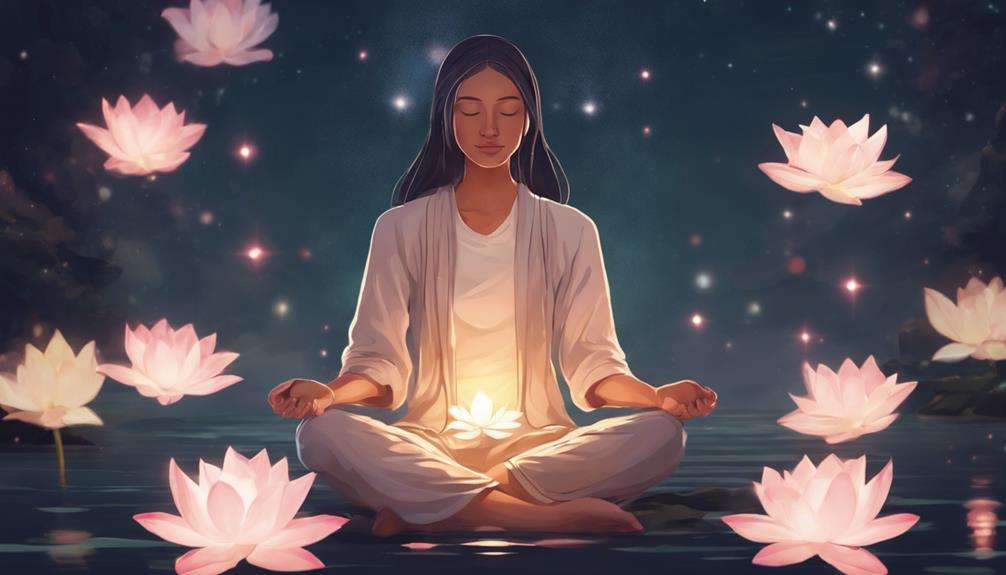
For individuals seeking inner peace, exploring different types of meditation can be a transformative journey towards mental clarity and emotional balance. Here are some meditation practices to help you on your path to inner peace:
- Guided Meditation: Listening to a trained instructor's voice can help you relax, focus your mind, and let go of stress and worries.
- Positive Affirmation Meditation: By repeating positive statements, you can rewire your brain to focus on optimism and self-love, fostering emotional balance.
- Mindfulness Meditation: This practice involves being present in the moment, observing your thoughts and feelings without judgment, which can lead to increased self-awareness and reduced anxiety.
- Moving Meditations: Engaging in activities like yoga, qigong, tai chi, or walking can combine physical movement with mindfulness, promoting a harmonious connection between body and mind for inner peace.
Incorporating these meditation practices into your daily routine can contribute to improved mental health, stress management, and overall emotional well-being. Start with a few minutes each day and gradually increase as you discover what resonates best with you.
Creating Emotional Awareness Through Yoga
In your journey towards emotional balance and self-awareness, incorporating yoga can be a powerful tool to cultivate emotional awareness and connect with your inner self. Through yoga, you can enhance your emotional intelligence by paying attention to your emotional landscape during practice. Yoga postures, such as child's pose and savasana, provide a space for you to reflect on your emotions and physical sensations, promoting self-awareness.
Mindful movement in yoga helps you tune into your emotions, allowing you to acknowledge and understand them better. Breathing techniques like diaphragmatic breathing not only support emotional regulation but also aid in balancing your emotional state. By practicing yoga regularly, you can deepen your connection with yourself, fostering a greater sense of emotional awareness and overall well-being.
Take the time during your practice to observe and reflect on your emotions, using yoga as a tool to cultivate a harmonious relationship between your mind, body, and emotions.
Balancing Energy Through Yoga and Meditation
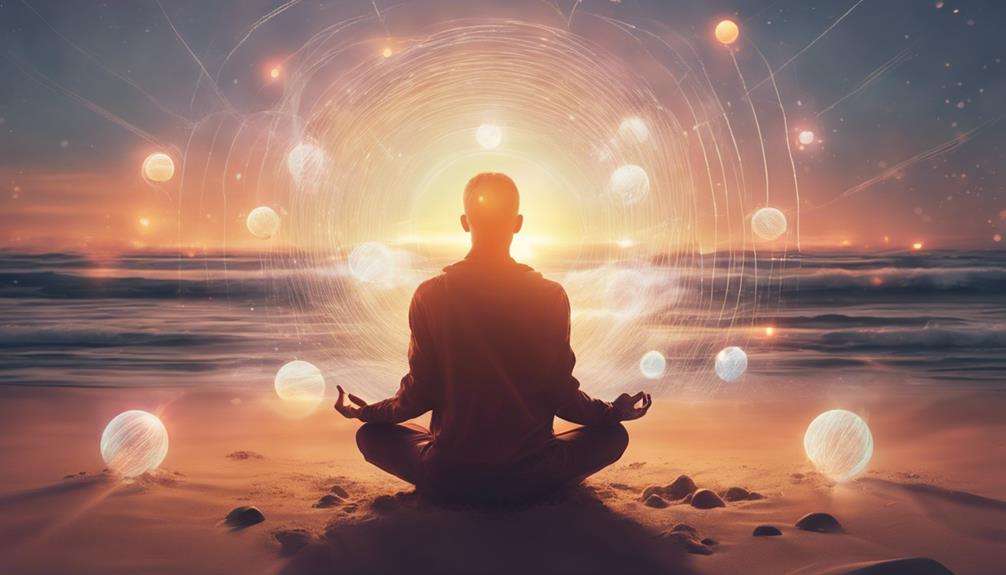
Balancing your energy through the practices of yoga and meditation involves harmonizing the flow of prana, the life force energy, within your body. By focusing on specific energy centers known as chakras, you can promote emotional balance and stability.
Here's how you can balance your energy effectively:
- Engage in mindful movement: Practicing yoga poses that target different chakras can help regulate the flow of prana and promote emotional equilibrium.
- Embrace focused breathing: Incorporating breathing techniques in your meditation practice enhances energy circulation, fostering a sense of harmony within.
- Release blockages: Through yoga and meditation, you can identify and address energy blockages that may be impacting your emotional well-being.
- Cultivate awareness: Developing a keen awareness of your energy flow can lead to a deeper understanding of your emotions and facilitate overall emotional balance.
Stay consistent in your practice to maintain harmony in your mind, body, and spirit.
Frequently Asked Questions
How Do You Release Trapped Emotions With Yoga?
To release trapped emotions with yoga, focus on breathwork techniques, body awareness, and movement therapy. By connecting your mind and body, you can release tension, promote energy flow, and experience emotional release, creating inner peace and aiding in the healing process.
How Can We Make Our Emotions Positive With Yoga?
To make your emotions positive with yoga, focus on the mind-body connection. Use breathing techniques and positive affirmations for emotional healing. Enhance energy flow, find inner peace, and increase self-awareness. Reduce stress, release emotions, and benefit from meditation.
How Do You Determine Emotional Balance?
To determine emotional balance, you must practice self-reflection techniques, enhance emotional awareness, and strengthen the mind-body connection. Stress management, breathwork benefits, meditation practices, and yoga poses all contribute to emotional healing, inner peace, and mental clarity.
Does Yoga Release Trapped Trauma?
Yoga can release trapped trauma by targeting emotional storage areas like the hips. It aids in emotional release, promotes healing, and clears emotional cobwebs. The mind-body connection in yoga therapy facilitates energy flow, aiding in trauma recovery and emotional wellbeing.
Conclusion
So, you've learned the importance of emotional balance through yoga and meditation. Remember, it's all about finding inner peace and relaxation.
Keep practicing those mindful breathing techniques, releasing emotions through yoga asanas, and meditating for inner calm.
Stay aware of your emotions and balance your energy effectively.
Who knew finding emotional balance could be so simple yet profound? Keep up the great work on your journey to emotional well-being!
